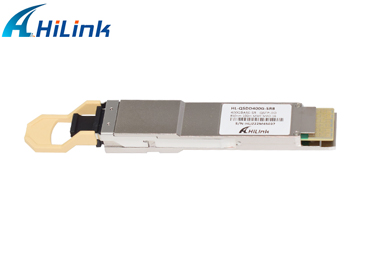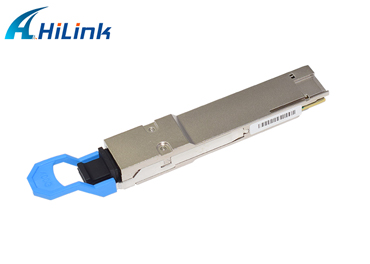Why Do 400G Optical Transceiver Prefer QSFP-DD?
Jul. 18, 2023
400G optical transceivers, which provide high-speed data transmission in data centers and networking applications, commonly prefer the QSFP-DD (Quad Small Form Factor Pluggable Double Density) form factor. There are several reasons why QSFP-DD has become the preferred choice for 400G optical transceivers. Let's explore the key advantages:
Increased Data Capacity:
The QSFP-DD form factor offers increased data capacity compared to its predecessors. It supports up to 8 lanes of high-speed electrical interfaces, enabling the transmission of 400G data rates. With each lane capable of transmitting up to 50Gbps, the QSFP-DD form factor provides a total bandwidth of 400Gbps, meeting the demands of high-speed data applications. HL-400G-QSFP-DD-SR8 is a 8×50Gbps 850nm multi-mode fiber, hot-pluggable optical transceiver. The module integrates four parallel lanes with a baud rate of 26.5625GBd each lane. It can transmit up to 70 m on fiber OM3 fiber or 100 m on OM4 fiber with FEC.
Go To See Our Optical Transceiver Products>>
Backward Compatibility:
QSFP-DD transceivers are designed to be backward compatible with QSFP and QSFP28 form factors. This compatibility allows for seamless integration and transition from lower data rates to 400G. Data centers and networking infrastructures can leverage existing QSFP-based systems while gradually migrating to higher data rates using QSFP-DD transceivers. This backward compatibility simplifies deployment and offers a cost-effective solution for upgrading network capacities.
Higher Port Density:
With the increasing demand for higher bandwidth and greater network capacity, optimizing space utilization in data centers is crucial. The QSFP-DD form factor provides a compact and dense design, enabling higher port density within the same physical space. It allows network equipment manufacturers to design switches, routers, and other networking devices with more than 400G ports, maximizing the utilization of rack space and reducing overall footprint requirements.
Improved Power Efficiency:
QSFP-DD transceivers offer improved power efficiency compared to previous generations. The form factor incorporates advanced power management capabilities, allowing for better control and optimization of power consumption. This improved power efficiency is essential in data centers where power consumption is a significant concern. By reducing power requirements, QSFP-DD transceivers contribute to energy savings and lower operating costs.
Enhanced Thermal Performance:
With higher data rates, optical transceivers generate more heat. The QSFP-DD form factor addresses this challenge by incorporating design features that enhance thermal performance. The form factor includes advanced heat dissipation mechanisms and improved airflow to efficiently manage and dissipate heat. Effective thermal management ensures reliable operation and prevents performance degradation due to excessive heat.
Hilink 400G-QSFP-DD DR4 Optical Module
Industry Adoption and Support:
The QSFP-DD form factor has gained significant industry support and adoption. It is backed by a consortium of industry-leading companies, including optical transceiver manufacturers, networking equipment vendors, and data center operators. This broad support fosters a robust ecosystem of compatible products and drives innovation and interoperability. The widespread adoption of QSFP-DD ensures the availability and compatibility of 400G optical transceivers in the market, making it the preferred choice for networking applications.
Future Scalability:
The QSFP-DD form factor has been designed to support future scalability beyond 400G. It offers a clear migration path to higher data rates, such as 800G or even 1.6Tbps. The form factor provides a foundation for future developments in optical transceiver technology, enabling the industry to meet the growing demands for higher bandwidth and performance.
In conclusion, the preference for QSFP-DD in 400G optical transceivers is driven by its increased data capacity, backward compatibility, higher port density, improved power efficiency, enhanced thermal performance, industry support, and future scalability. These advantages make QSFP-DD the go-to form factor for enabling high-speed data transmission in data centers and networking applications, ensuring efficient and reliable connectivity in today's demanding digital environments.
For more information, please contact us. We will provide professional answers.















